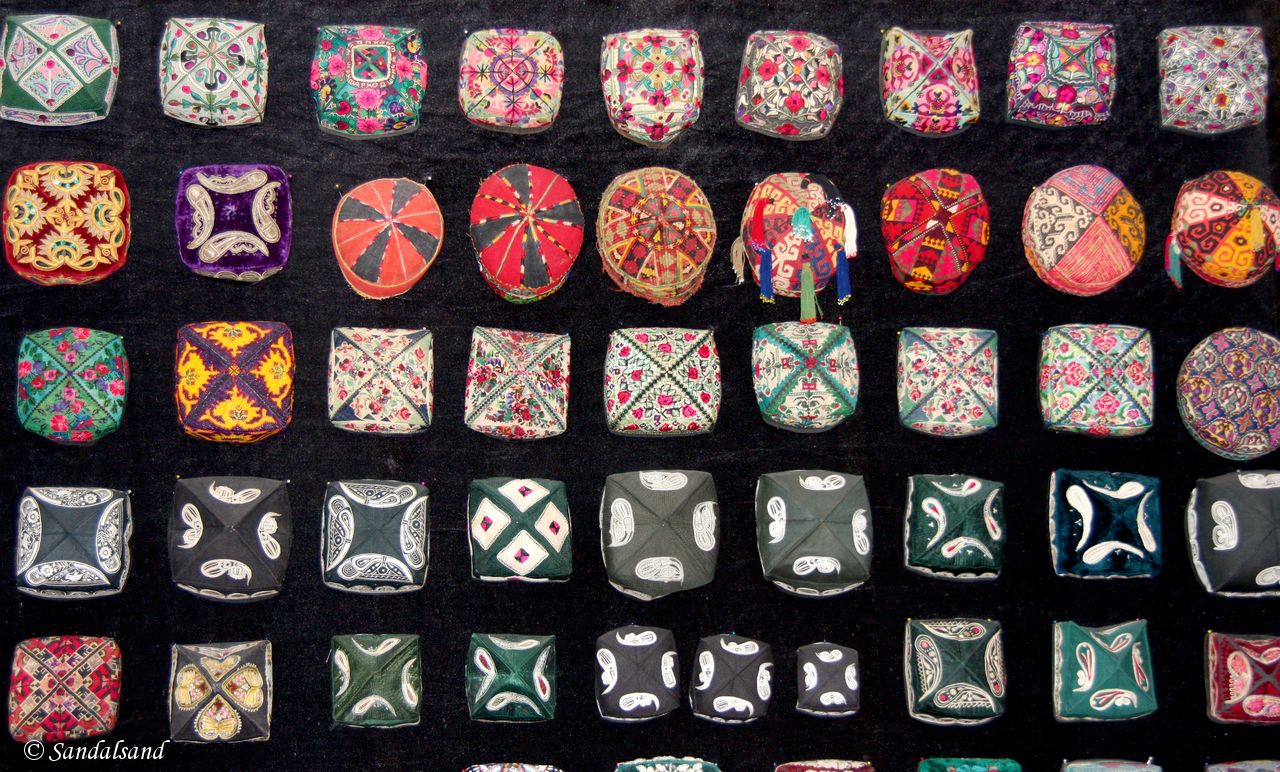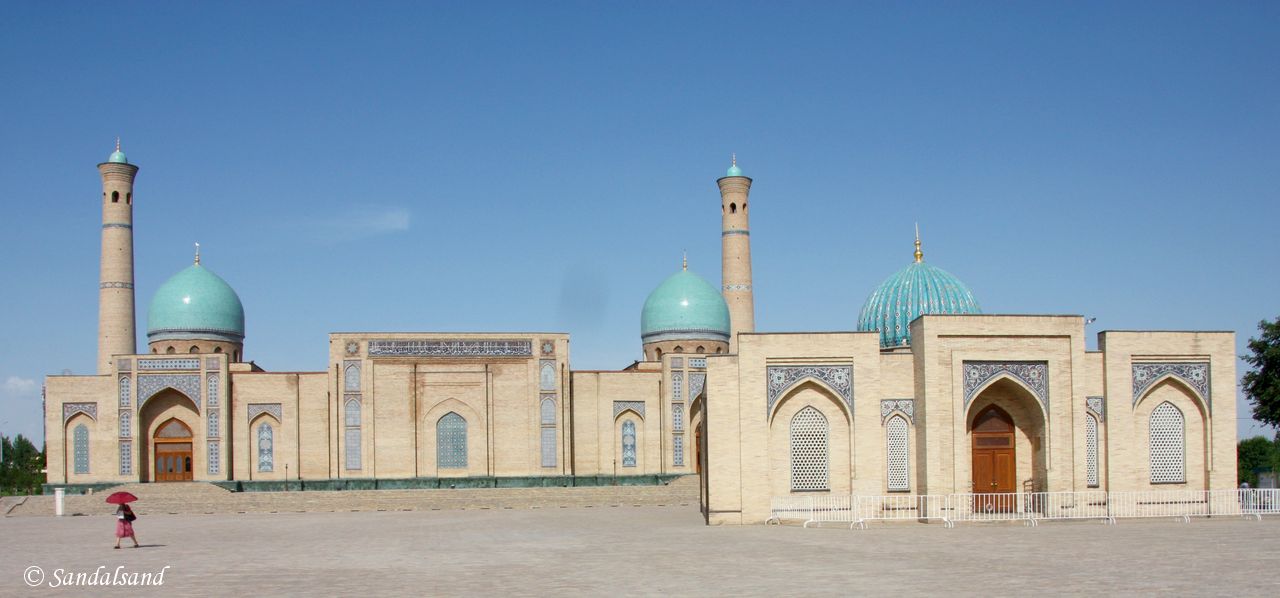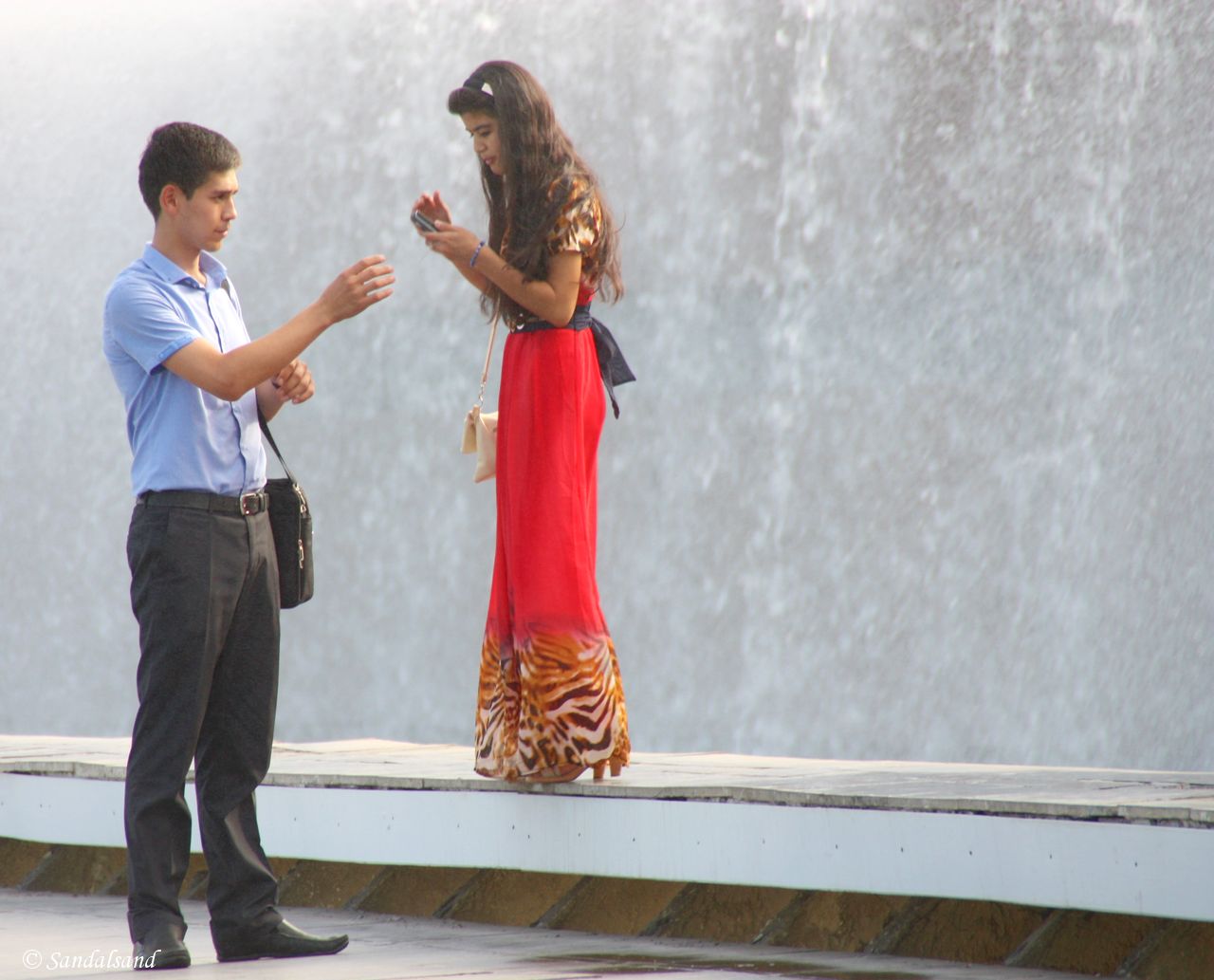Being the capital of Uzbekistan and the largest city in Central Asia, Tashkent has every reason to show off, and it does. This is clearly evident in both aspects visitors are presented to, Old Tashkent and New Tashkent.
The city of about 2,3 million was my first stop on a fourteen days road trip of the Central Asian republics of Uzbekistan and Kyrgyzstan. Read my introduction.
Old Tashkent
I have been responsible for planning and executing my own (solo or family) travels for more than three decades. This time I was on a group tour and was unusually unprepared. When the guide announced that we would now be entering Old Tashkent, I was eagerly awaiting a look into a really ancient part of the city. It started well.
The Museum of Applied Arts
The Museum of Applied Arts is located in an old palace and houses a nice selection of objects from throughout the country: Woven carpets, wood carvings, ceramics and these traditional hats. Each hat represents a different region of the country, or tribe. They are in fact still widely used, but the majority of (old) men using them would favour the black and white ones seen at centre, bottom of this picture.

Men’s hats on display in the Museum of Applied Arts, Tashkent
Khast Imam Mosque
Coming up next in Old Tashkent was a surprise. The introduction in the bus to Telyashayakh Mosque (Khast Imam Mosque) was promising, but the sight we met seemed anything but old. The Uzbeks have clearly gone to great lengths to reconstruct the old mosque and madrasah (religious school) into something that seemed too polished, too slick to be real. There was a grand square, surrounded by a very nice park (which looked forbidden to enter or use), and highly perfected structures. This looked very new, not old.

Square at the Telyashayakh Mosque (Khast Imam Mosque). The building to the right contains the world’s oldest Quran.
The world’s oldest Quran
There is however one very noteworthy object on display here. Only 19 years after the death of Mohammad the Prophet, five volumes of the Quran (Koran) was commissioned by the Caliph Othman. This one, finished in the year 651, and another one in the Topkapi Palace of Istanbul, are the sole remaining originals. It lies in a glass box on a pedestal, large, written on deerskin.
I am a sceptic by profession, and had my doubts about the authenticity of it. But the fact is that it looked very old and besides I was in the realm of believers. I left my scepticism behind and noticed that for such a gem in the history of Islam, there were surprisingly few pilgrims around.
And that was it. I don’t think I can blame the guide, there was simply nothing more of Old Tashkent to discover. So let us move to the New part of the capital.
New Tashkent
Being a Soviet republic for almost a century clearly leaves its marks on city development. What foreign visitors are presented as New Tashkent consists of a series of monumental public buildings, even more parks where treading on the grass looks forbidden, and an impressive road system.
Mustakillik Square
I walked by myself around in the huge Mustakillik Square and was, admittedly, impressed. The layout was very nice and structured. And clean. Uzbekistan is a very clean country, I would later come to realise. There is no dirt, no litter anywhere to be seen.

A common sight all over Uzbekistan: Young couples visit the monuments and parks in the early evening. He is dressed like all other men around the globe, she is wearing a long, elegant and colourful dress.
So, we may ask, is there nothing more to Tashkent than this? Clearly yes.
Driving in and out of Tashkent we passed residential blocks and shopping streets like in any other city of the world, flashing the same international brands we encounter everywhere. There is not much left from Tashkent’s days as a Silk Road hub, not even from the last century.
The reason is largely due to a massive 1966 earthquake. Just about any earthquake reaching 7.5 on the Richter scale will have severe consequences, and Tashkent was no exception. It was a disaster. On the other hand the Soviets managed to utilise this as an opportunity to erect new (low) residential areas, wide tree-lined avenues, huge squares and restore the old buildings that were left.

Mustakillik Square stork monument, or more precisely the decorated archway of Ezgulik (the arch of good and noble aspirations) with a stork on top. (Uzbekistan has a large number of this bird species.)
Impressions
Credit must be given to the authorities, for Tashkent surprised us all. It did not look poor, it had the familiar looks of a modern, proud capital of a nation attempting to assert their newborn independence. Tashkent may stand as a symbol of country eager to promote its historic roots and develop into a something new. Too bad then that the political system is changing so slowly. On the other hand there are other former Soviet republics that are worse off.
I might add that our arrival on an early morning flight was not easy. Red tape, bureaucratic hassles and utter nonsense at the airport left us waiting for two hours before being allowed to enter. All papers were in perfect shape, even stamped by the Foreign Ministry. The tourist officials are always eager to accommodate foreign visitors. The problem lies with the immigration people. How could a group of Norwegians with a bona fide group visa give them such a problem? At the end we got through, paying only 17 dollars US for our visa, instead of 25. Can you believe it? (My fear in advance of going solo to this police-state received a blow, it seemed that arriving here in a group possessed almost equal problems.)
Watch this video from Tashkent:
Read more
I am confident that visitors with more time to spend in Tashkent will find more to see and do. We were on the other hand set for our next destination. The most mythical city of the Silk Road, Samarkand.
This is part of a series of articles from a journey to the Central Asian republics of Uzbekistan and Kyrgizstan in June 2014.
On the map below Leg 1 goes from Tashkent (A) west to Khiva (E) in Uzbekistan. Then a flight back to Tashkent (A) before Leg 2 to Bishkek (F) in Kyrgyzstan.
The chapters:
(1) In search of the ancient Silk Road
(2) The monumentalism of Tashkent
(4) Shakhrisabz and the birth of a nation
(5) The Emir of Bukhara and the lost camels
(6) The magnificent oasis of Khiva
(7) The fertile Fergana Valley


